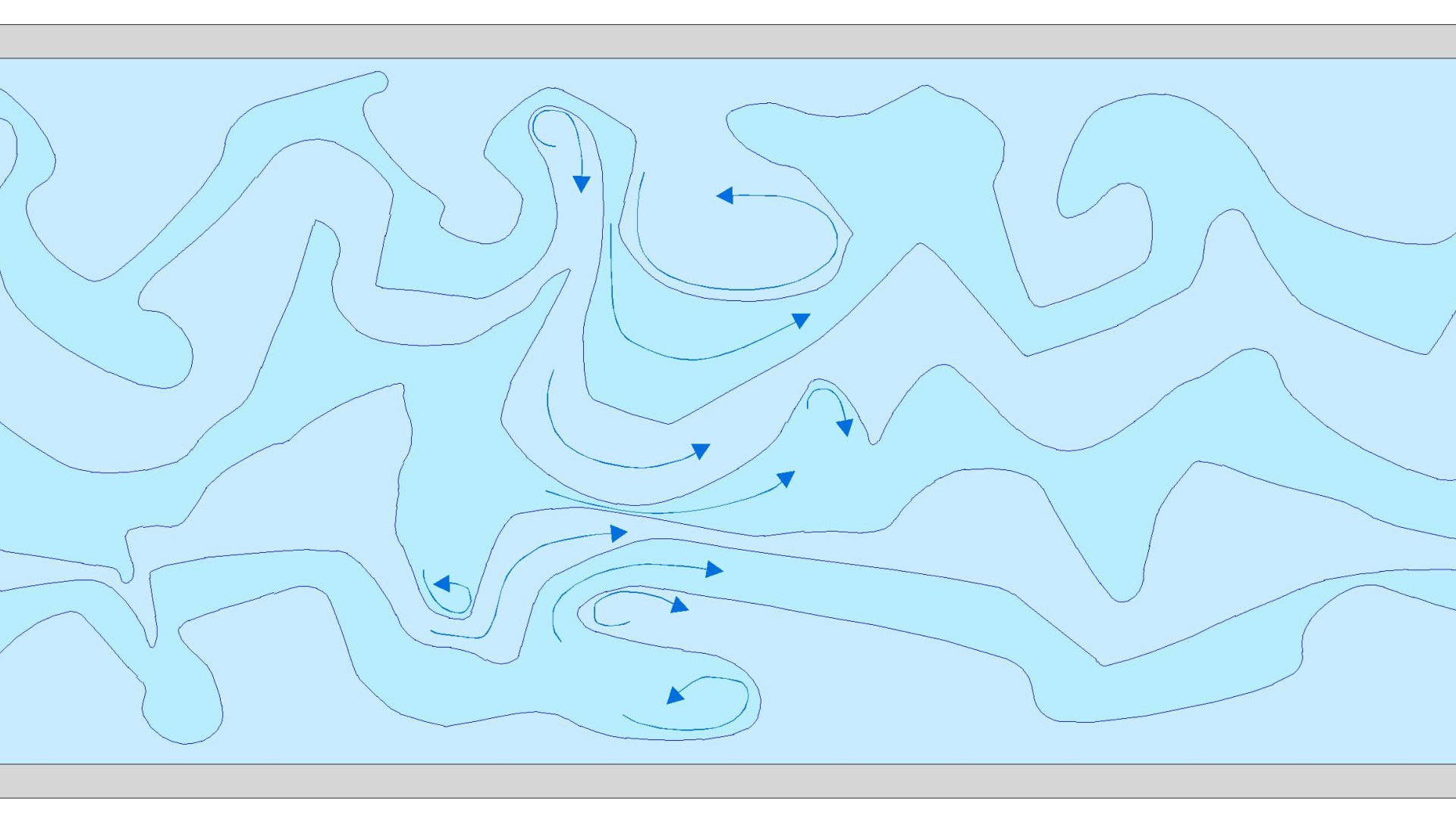As discussed in the chapter Properties of water and water park design, water is a material medium that deforms continuously. This continuous deformation implies movement, in other words, flow.
The flow of water, or its movement, can be classified into laminar and turbulent:
-Laminar flow: corresponds to the “orderly” movement of water particles, without mixing or colliding with each other, whose streamlines remain “parallel”. Its velocity, which is very stable, is close to constant and zero in the direction transversal to the streamlines. Laminar flow generally occurs at very low fluid velocities, or in fluids with high viscosities.

Image 1. Representation of laminar flow in a pipe. The “parallel” streamlines can be seen.
– Turbulent flow: refers to the erratic and “disorderly” movement of water. Streamlines oscillate and mix, with collisions between particles. It exhibits permanent instability and very rapid fluctuations in velocity. This strong velocity variability facilitates shear stresses in the water mass. In turn, shear stresses lead to energy dissipation, the higher the shear stresses, the greater the energy dissipation. Therefore, the head losses in a pipe with a turbulent regime will be greater than those of a laminar flow.

Image 2. Illustration of turbulent flow in a pipe, with “disordered” streamlines.
The parameter indicating the type of flow is the Reynolds number. It is a dimensionless coefficient that depends mainly on the viscosity and velocity of the water. The pipe flow is defined by the following expression:

Where Re, or Reynolds number (dimensionless), is directly proportional to the product of 𝜌, or water density (kg/m³), v, water velocity (m/s), and D, inner pipe diameter (m); and inversely proportional to 𝜇, or dynamic viscosity of water (kg/m-s).
When the Reynolds coefficient is greater than 4,000, the flow is considered turbulent. If the value is less than 2,300, the flow is laminar. For intermediate values (between 2,300 and 4,000), the flow is unsteady, so that it can change from laminar to turbulent and vice versa, and is called transition flow.
In general, in most hydraulic infrastructures, if we consider the usual operating speeds, especially in pipe networks, the water flows in a turbulent regime. As mentioned above, turbulent flow produces head losses in the pipe. However, there are some specific examples in which it is common for water to flow in laminar flow. This is the case of decanters for water treatment, especially those of the laminar type, or some hydrotherapy accessories for swimming pools, such as water curtains.
By Luis Llor, senior hydraulic engineer in Amusement Logic’s Architecture Department.






